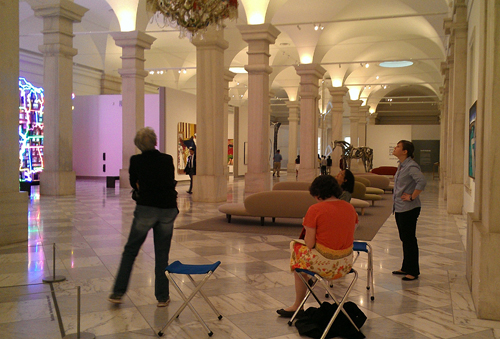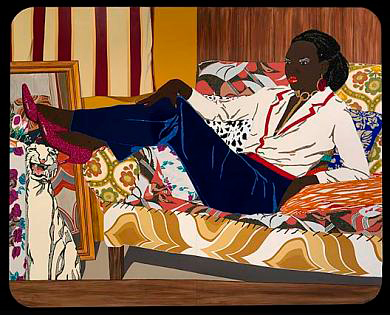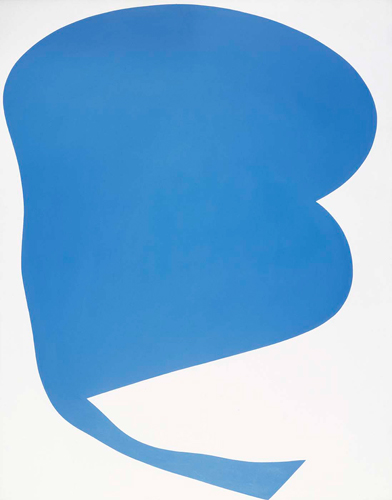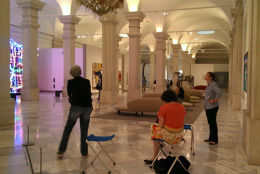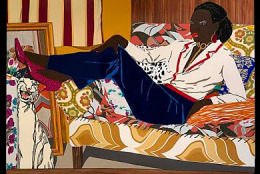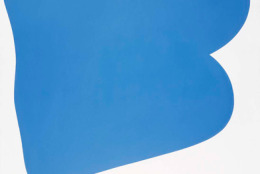Madeline Tallman, special to wtop.com
WASHINGTON – If you’ve ever stared at a piece of modern art and felt you just didn’t “get it,” you’re probably among the majority.
The Smithsonian is trying to change that.
The American Art Museum has begun hosting discussions aimed at helping museum-goers grasp the meaning behind some of the museum’s more enigmatic works.
Aside from big name artists such as Pablo Picaso and Andy Warhol, many people find modern art “inaccessible” and hard to figure out, says Public Program Coordinator Laurel Fehrenbach, who facilitated the discussion, “Is This Art?” at the Smithsonian on Tuesday.
Fehrenbach says the program started because many patrons of the modern art floor of the museum said they weren’t able to enjoy the modern art exhibits as much as the other genres because some of it was so abstract.
By providing “Is This Art?” in an open discussion format, the museum hopes to create conversations similar to those that might naturally occur between visitors. The effort began a few months ago, and each session bring out anywhere from three to 20 people.
In the talks, participants focus on one piece and discuss what they see. From there, the conversation is natural, with small prompts from Fehrenbach here and there.
Some of the confusion surrounding modern art stems from a lack of context, as one participant brought up in the discussion on Tuesday.
Kreg Kelley, curator at Galerie Lareuse in Georgetown, agrees, saying sometimes people need the artist’s story behind the piece to fully understand it.
“I can see where people would say certain things look junky or like a craft project,” Kelley says. “But who knows in 100 years if someone may look at that (artist) as someone that was before their time.”
Especially in minimal, conceptual art, he says, people can miss the meaning.
At the Smithsonian, Fehrenbach has witnessed this reaction.
One example is “Portrait of Mnonja” by Mickalene Thomas, an 8-by-10 foot portrait of a lounging African American woman that hangs in the Lincoln Gallery. Thomas used rhinestones and bright paint, making the colors of her clothing and shoes really stand out, especially against her dark skin. While discussion participants agreed it is a well-crafted painting, they struggled with taking away a larger meaning or theme. They just saw it as a woman sitting on a couch.
But some paintings are easier to understand than others.
A painting by Ellsworth Kelly, “Blue on White,” a large blue irregular object on a white background, has elicited positive reactions. Fehrenbach says because the potential meaning of the piece requires more thinking, participants have had a more enjoyable experience trying to figure out “what the heck it could be.”
But, art is supposed to be frustrating, Fehrenbach says. That quality makes people think about why it’s art.
“There is always the artist’s answer about what they think it is,” Fehrenbach said at the discussion. But the public contributes just as much to the dialogue, she says.
Margery Goldberg, owner of the Zenith Gallery in Northwest D.C., says the people who come into her gallery do not express that same confusion. She says her exhibits combine the artist’s original intent with genuine talent, and people easily recognize it as art.
When modern art has an original concept but lacks talent, that’s when people get confused as to why it’s art, she says.
“I’ve gone into galleries and museums and scratched my head at times,” she says.
But the level of understanding also depends on the viewer. Goldberg compared looking at modern art to trying different varieties of ice cream.
“Not everybody likes every flavor,” she says.
Follow @WTOP on Twitter.
(Copyright 2012 by WTOP. All Rights Reserved.)

